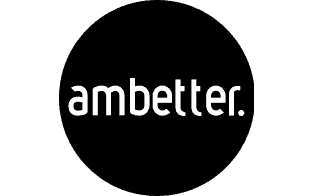The mental health field is evolving rapidly, with new technologies, research findings, and societal shifts shaping the landscape.
As we enter 2025, staying informed about these trends is essential for mental health professionals aiming to provide effective, innovative, and compassionate care. Here are the key trends to watch and actionable ways to integrate them into your practice.
1. The Integration of AI and Digital Tools
Artificial intelligence (AI) and digital mental health tools are revolutionizing the field. Instead of replacing clinicians, these technologies are increasingly being used to enhance their effectiveness. Augmentive offers tools that streamline administrative tasks like scheduling and patient recordkeeping, allowing therapists to focus on care. Additionally, tools such as Mirah help collect patient-reported outcomes and provide actionable insights, enabling data-driven treatment planning.
How to Incorporate It:
- Leverage AI Tools for Routine Tasks: Use AI-driven scheduling, note-taking, or symptom tracking tools to streamline administrative duties and focus more on patient care.
- Consider Digital Therapeutics: Recommend evidence-based apps like Woebot or BetterHelp to supplement therapy, ensuring they align with clinical guidelines and patient goals.
- Train for AI Literacy: Stay informed about AI advancements and ethical considerations. Attend webinars or courses on integrating AI into mental health care responsibly.
Trauma-informed care continues to gain traction as research highlights the pervasive effects of trauma on mental health. Understanding and addressing trauma is now a fundamental part of effective therapy.
How to Incorporate It:
- Update Your Training: Invest in workshops or certifications focused on trauma-informed practices.
- Create a Safe Environment: Ensure your practice’s physical and emotional spaces foster safety and trust. Small changes, like rearranging furniture or offering grounding exercises, can make a big difference.
- Screen for Trauma: Incorporate trauma-screening tools during assessments to identify underlying issues.
Mental health is increasingly viewed through a holistic lens that incorporates physical health, nutrition, and lifestyle. Practices such as mindfulness, exercise, and diet modifications are becoming staples of mental health care.
How to Incorporate It:
- Collaborate with Other Professionals: Partner with nutritionists, fitness trainers, or holistic health practitioners to offer well-rounded care.
- Promote Self-Care Practices: Encourage patients to engage in activities like yoga, journaling, or mindfulness exercises.
- Track Lifestyle Factors: Use tools to monitor patients’ sleep, exercise, and dietary habits as part of treatment planning.
Cultural competence is more important than ever as practices become more diverse. Understanding a patient’s cultural background can significantly impact the success of therapy.
How to Incorporate It:
- Expand Cultural Knowledge: Educate yourself about different cultural perspectives on mental health through books, seminars, and peer discussions.
- Use Inclusive Language: Avoid assumptions and adapt your language to be respectful and inclusive.
- Hire Diverse Staff: If possible, hire professionals from various backgrounds to reflect and serve your community effectively.
Youth mental health has reached critical levels, driven by factors like social media, academic pressure, and global uncertainty. Tailoring interventions for younger populations is a priority.
How to Incorporate It:
- Specialized Training: Pursue training in child and adolescent therapy techniques.
- Incorporate Technology: Use apps and platforms that resonate with younger patients, such as gamified therapy tools.
- Engage Families: Include parents or guardians in treatment plans to create a supportive environment outside of therapy.
As awareness grows around the impact of mental health on productivity, more workplaces are prioritizing employee well-being. Therapists have an opportunity to support organizations in these efforts.
How to Incorporate It:
- Offer Workplace Workshops: Provide training sessions for companies on stress management, resilience, and work-life balance.
- Collaborate with Employers: Partner with businesses to create tailored employee assistance programs (EAPs).
- Address Burnout: Develop interventions specifically designed for workplace burnout, a rising issue in today’s labor market.
The negative effects of excessive screen time on mental health are becoming increasingly evident. Helping patients find balance in their digital lives is crucial.
How to Incorporate It:
- Screen for Digital Overload: Include questions about screen time and social media use during assessments.
- Teach Boundaries: Offer tools and strategies for managing screen time, such as setting app limits or scheduling device-free hours.
- Model Healthy Habits: Lead by example in your own digital behavior and share insights with patients.
Peer support—involving individuals with lived experience of mental health issues—is gaining recognition as a powerful adjunct to traditional therapy. Recovery Unplugged exemplifies this approach by offering a lifetime alumni program that fosters community and ongoing support. This program includes peer support, weekly virtual and in-person meetings, and free events designed to maintain engagement and connection.
How to Incorporate It:
- Collaborate with Peer Specialists: Integrate certified peer support workers into your team.
- Promote Peer Groups: Facilitate or recommend peer-led support groups for specific issues, like anxiety or addiction.
- Encourage Lived Experience: Value and integrate insights from individuals who have overcome mental health challenges.
Encourage Lived Experience: Value and integrate insights from individuals who have overcome mental health challenges.
Telehealth has solidified its role in mental health care, offering flexibility and accessibility. Hybrid models combining in-person and virtual sessions are becoming the norm. Recovery Unplugged also offers telehealth options for mental health and addiction care, ensuring patients can access professional support from the comfort of their homes.
How to Incorporate It:
- Optimize Telehealth Platforms: Ensure your telehealth system is user-friendly and secure.
- Offer Flexible Scheduling: Allow patients to choose between in-person and virtual appointments.
- Invest in Tech: Equip your practice with high-quality cameras, microphones, and reliable internet to ensure a seamless virtual experience.
Mental health trends in 2025 highlight innovation, inclusivity, and holistic care. Recovery Unplugged takes a well-rounded approach, ensuring mental health and addiction care is accessible and attuned to the needs of modern patients. By staying ahead of emerging developments and adapting your practice, you can build meaningful connections and provide support that grows with your patients. Whether it’s integrating smart tools, addressing trauma with empathy, or fostering cultural competence, the key is to stay flexible and responsive to a changing world.

























